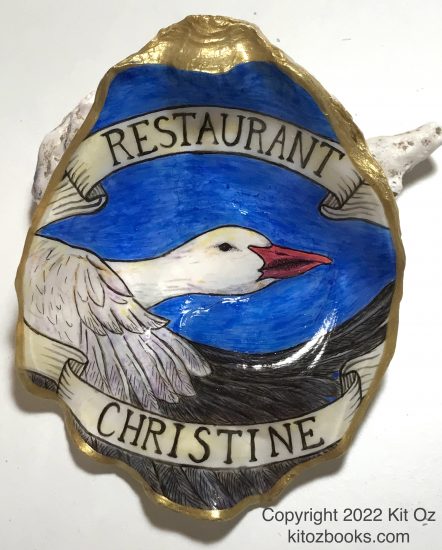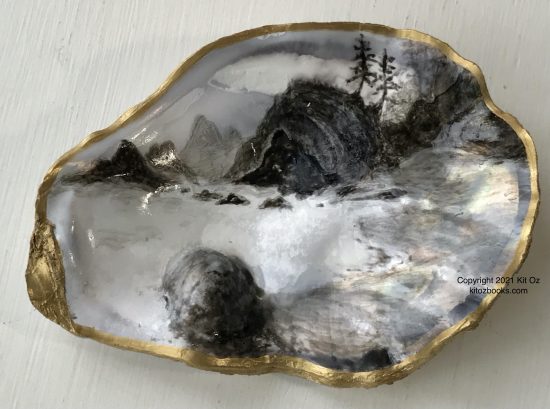Uncategorized
Oyster Shells at the Seattle Art Museum
My painted oyster shells are now for sale in the shop at the Seattle Art Museum. This sale was originally planned to coincide with the museum’s exhibition, “Our Blue Planet: Global Visions of Water,” but as they were such a hit with visitors, the shells now have a permanent place in the shop. For more information on how to purchase a shell, go here: Kit’s Shop.
People have asked me, “How did this opportunity to sell at SAM come about?” And the answer is…. I asked. I sent the shop’s head buyer several photos of my painted oyster shells, and she thought they’d be a great match to the exhibition.
Most of the shells feature flora and fauna native to the coastal areas of the Pacific Northwest. Each one takes me from 2-4 days to paint, not counting research time, design time, and time spent prepping the farmed oyster shells. I use Pebeo Porcelaine 150 acrylic paint, which sticks well to the slick surface of the shell. Fine details are put in with ink.
Artists all over the world paint on shells, but I never felt inspired to do so myself until I saw the lovely work by Delfts Blauwe Oesters (du sud) on Instagram. There are several people in the Netherlands who, like her, paint oyster shells to look like fragments of blue and white porcelain. After seeing them I thought: we have oysters here in the Seattle area. I could paint on shells… but I want to do it in my own style, in a way that looks like my own environment, not like something from the Netherlands. And thus my shells.
Pacific Banana Slug, and shield lichen

Gathering and preparing the shells turned out to have more of a learning curve than I expected. It was quickly going to get expensive if I relied on buying and eating all my oysters. Up-cycling from a restaurant — like from the generous Restaurant Christine in the Wallingford neighborhood of Seattle — was good for tiny shells, but not for anything bigger.
My “Thank You” gift to Restaurant Christine
Their logo is a goose.

Gathering oysters myself, with my shellfish license, was also out: you must shuck your oysters on the beach and leave the shells. My final solution was going to oyster farms, and getting permission to collect shells in the waste areas. The unexpected bonus of this was that old shells that have been out in the weather have been bleached by the sun, and are far easier to clean than fresh oyster shells.
And oh, the labors of cleaning and sterilizing the shells. Oh my. And then there is the grinding down of sharp, rough edges and the buffing of loose calcium off of the interiors. I may have killed that vintage grinder thing in the foreground; my husband pointed out that it’s not made to run 8 hours straight.

The result, however, is a beautiful shell whose color variations, iridescence, and undulations serve as the inspiration for what I will paint on it.




Here’s a small sample of the painted shells; you can see more in my shop and on my Painted Oyster Shells page.








